How to cut large mortise holes by hand
I have been replacing doors at Penrhyn Castle and the oak I am using, as with all oak, can be a resilient wood and its grain repels the onslaught of chisels the deeper you penetrate into the wood because leverage becomes difficult. I have never particularly liked the boring-holes-and-chiselling method for mortising but in the case where the stiles of the door are 9″ and the mortise holes 12″ long and 3/4″ wide I change my view slightly. These holes have to run perfectly parallel to the outside face in every hole otherwise my door will be twisted; On a door that’s so large, 4 feet wide, the twist is magnified with each degree of error and every inch of width. Here is my method, which can be used for both hand brace or electric hand -held drill:
Step:
Deduct the thickness of the drill bit or the size of the thickness of the mortise hole from the thickness of the door and divide by two. In my case this came to 7/8″(19mm).
Step:
I milled two cheeks of oak to that thickness and the length of my longest mortise ,12″, by 4 1/2″.
Step:
I used 3/4″ plywood 10″ wide and 14″ long to screw the oak cheeks to.
I clamped the oak door stile and the two guides in the vise and added to additional clamps to close any gaps between the guides and the stiles at the critical lines along the stile.
I added to clamps higher up to ensure the guides were parallel all the way through, using the actual bit as a reference for exactness.
With a large high-powered electric drill I bored out the waste, overlapping the holes slightly.
With the holes bored just over half way through from one side, I flipped over and set up the guides in exactly the same way. It takes less than a minute to do this.
Keeping the cheeks in place, I use a long paring chisel to define the exact wall of the mortise hole and also to guide me deeper into the mortise so that the cheeks are parallel to the outside face.
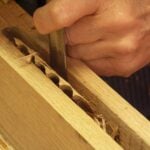
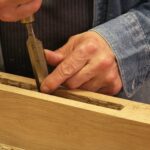
Step:
I chop the ends square and clean up the areas.
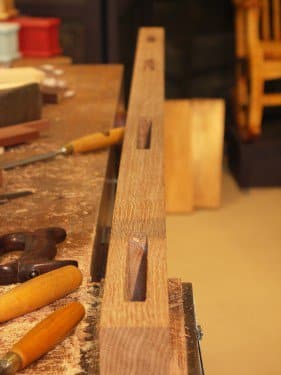


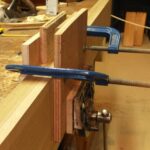
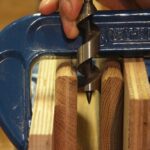
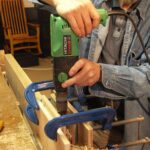
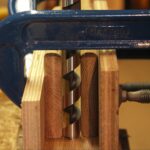
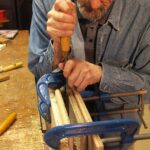
In 1986 I rebuilt or restored nine huge old oak doors at the Biltmore House in Asheville North Carolina. It took my dad and I three weeks working ten plus hours daily. The largest was six feet wide by eleven and a half feet tall. You are exactly right on spot with the accuracy needed when working with such large pieces. Some might think that because it is so large you don’t have to be as careful with accuracy, but it really shows if you aren’t accurate. Paul, I love it when you are working on a project and stress always working accurately.
I know this is an old blog, but when I click on the pictures the links take me to a completely different photo!